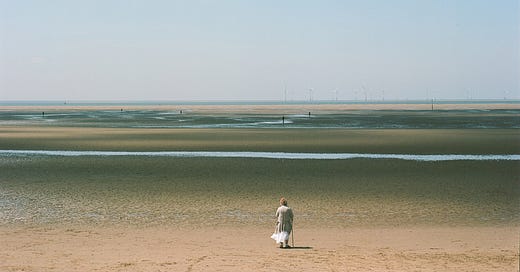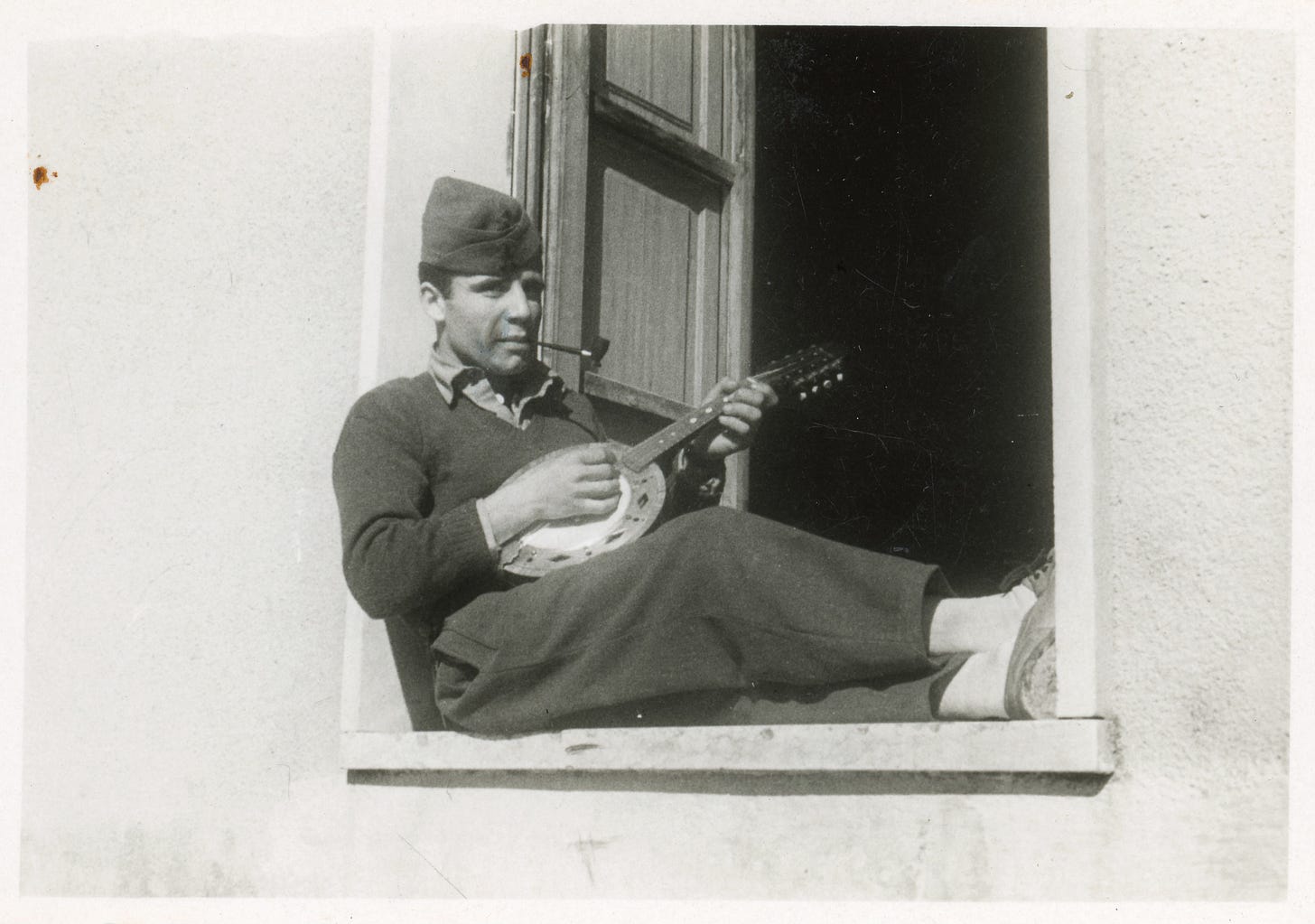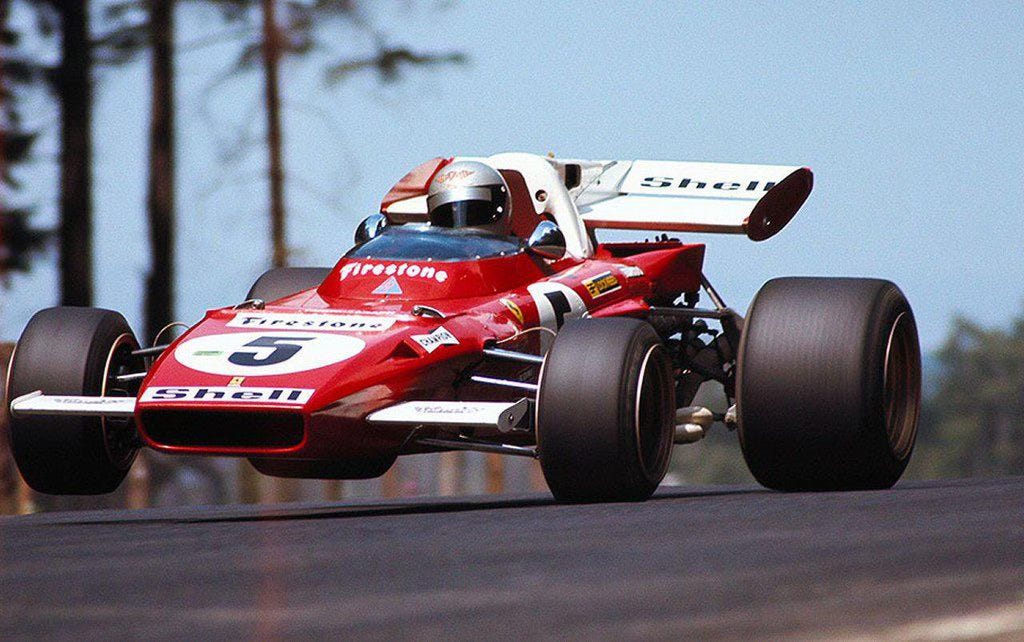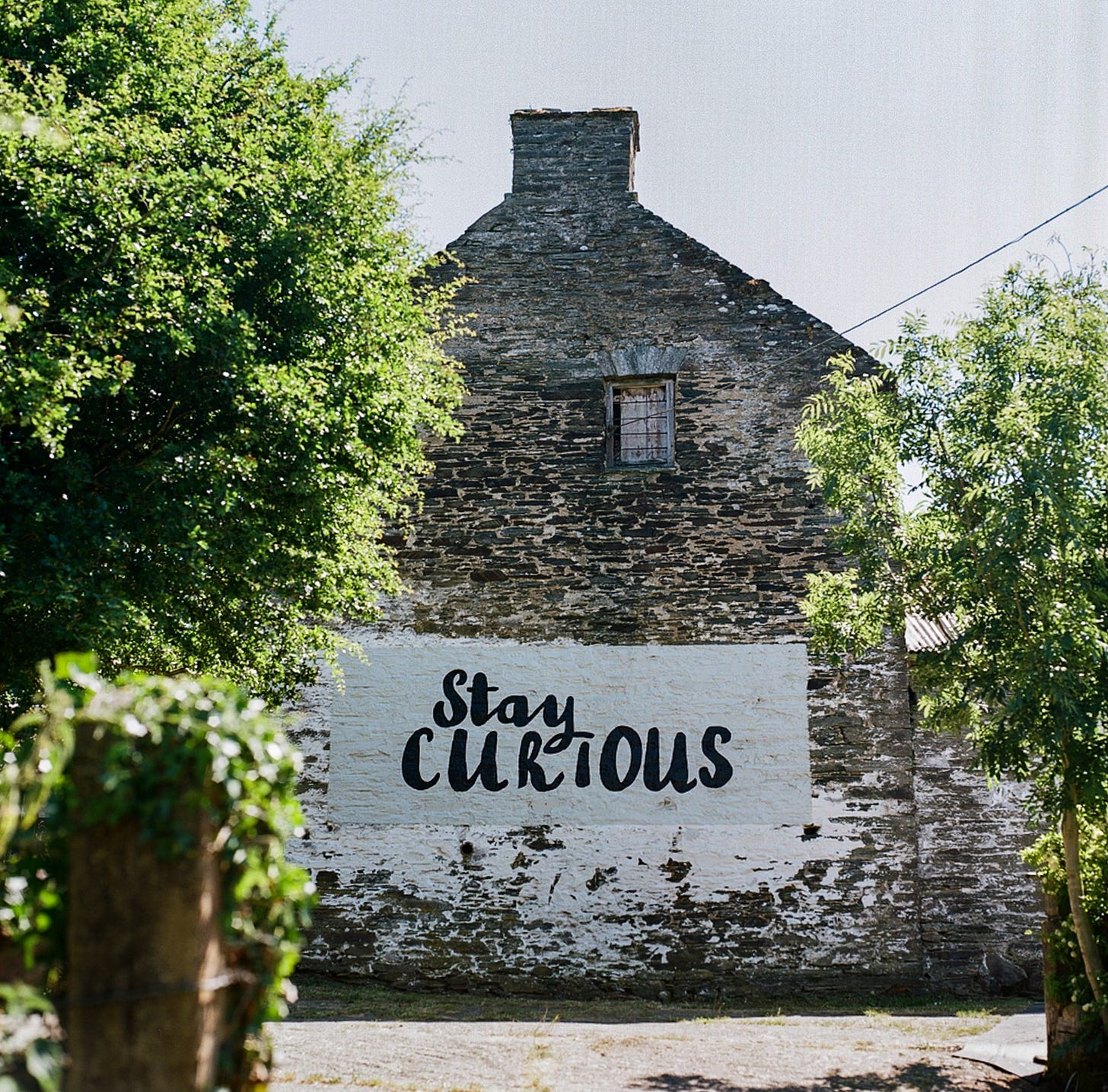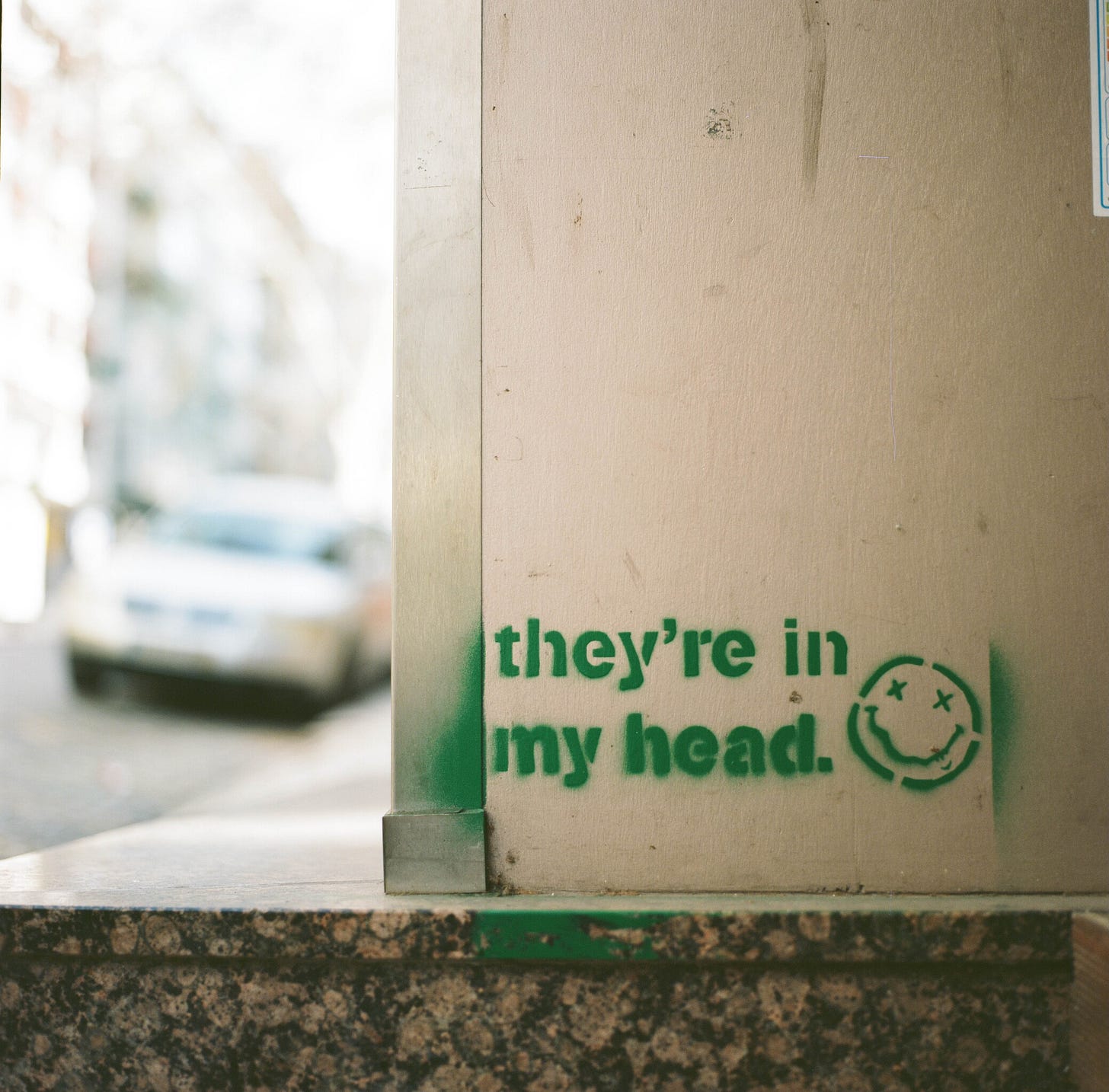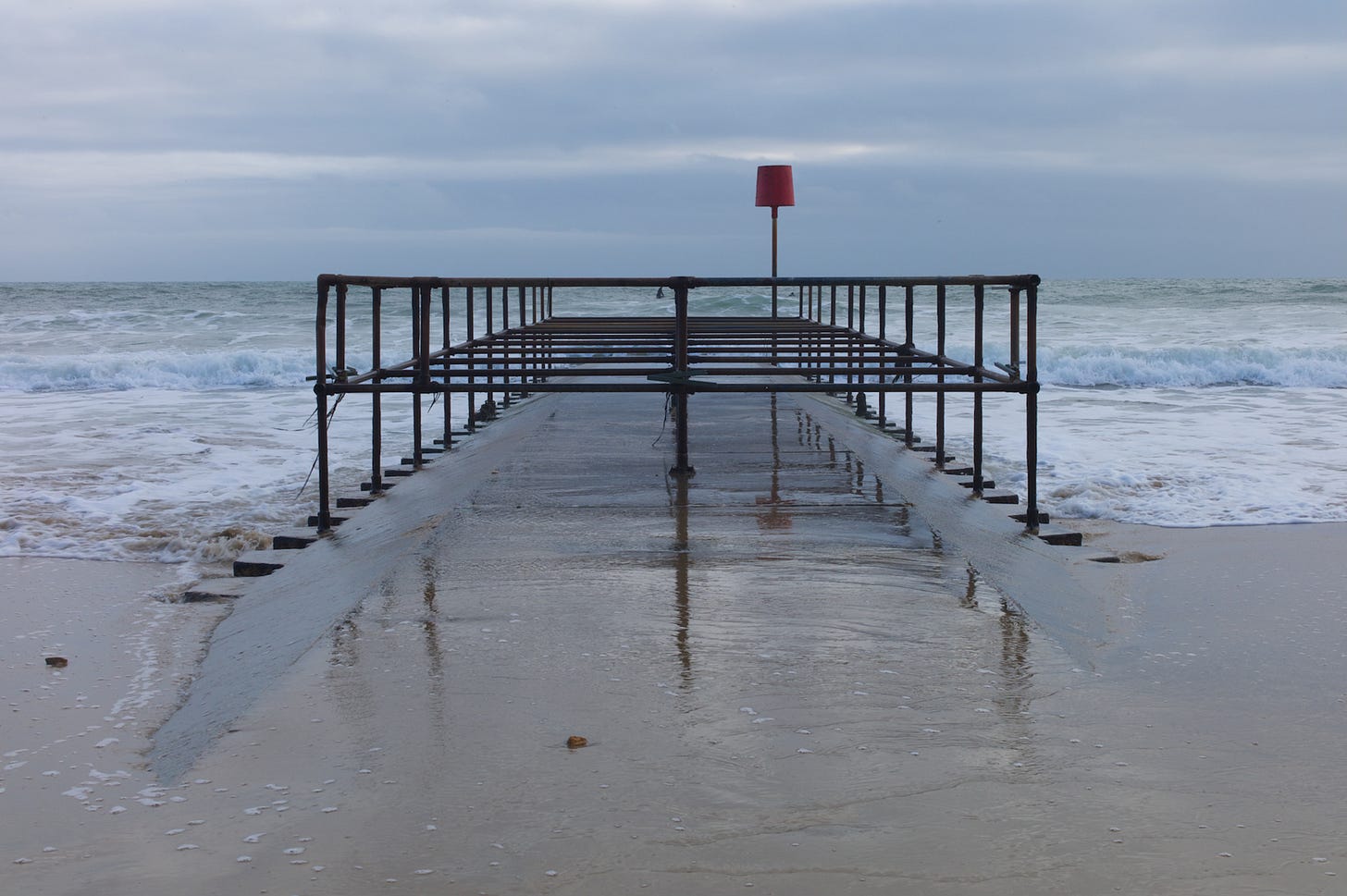Simplicity Beyond Complexity
There is so much complexity and emotion involved in property and the decision-making about where to work, where to live and how we want to live. I’ve always believed, as a developer, that my primary obligation is to try damned hard to make spaces that maximise the wellbeing and creativity of those that use them. I produced a course about this in 2021 which is being reprised later this year in a new form.
The thing is, if we want to live well then, we need to tame the emotion. And we need to resolve the complexity. I’ve said before in this newsletter that to make good buildings requires many things - passion, creativity, skill, clarity and resilience amongst other things. And it always involves significant financial investment. It’s a high stakes fusion between emotional and financial resources. Every opportunity to make a new building, or to renovate or re-purpose an existing one, provides a unique set of challenges and constraints. Every site is different. Every building is different. Whether it be the topography, geology, or ecology of a site, the location, the heritage and history of place, the specific construction technique used in a new or existing building, all are uniquely different. Every time.
To make space that works, space that delights, means resolving all of this. It’s a difficult balancing act. Everywhere we look we are confronted with bountiful complexity. I think this is the main reason so much of what gets built is so bad. It’s just easier and (short-term) cheaper to ignore the complexity and make do. But that’s never the right answer. We must resolve it. That’s as true to anyone doing their own thing, as it is to a professional developer.
The answer lies in what environmental psychologists call ordered complexity. Humans thrive on a balance between complexity and organisation. We don’t like spaces that are boring or sterile, but on the contrary, we don’t like to be overwhelmed by visual information that lacks organising principals either. Ordered complexity is the quality where complex elements are integrated into a coherent whole.
I’ve always liked a slight twist on it. What I call “simplicity beyond complexity.” It’s really the same thing as ordered complexity and it applies all over the place, well beyond the world of property. You know it when you see it in industrial design (Leica, Apple, Dyson, Vitsoe, Braun, Gransfors Bruks, G-Tech drives the list goes on), you know it in music (the Beatles, Eminem*) and literature (Kurt Vonnegut, John Steinbeck, George Orwell) and film (The Godfather). It’s key in great storytelling. The secret is for the result to look, feel or sound simple. But it isn’t simplicity that ignores or leaves complexity unresolved. That’s no good. It’s what Oliver Wendell Holmes Senior, the polymath American physician and poet wanted when he said:
“I would not give a fig for the simplicity this side of complexity, but I would give my life for the simplicity on the other side of complexity.”
Many of the biggest intellectual and creative dogs in history have had something to say about simplicity. Here’s my top 6.
At number 6, the Japanese titan of architecture and ex-professional boxer and truck driver, Tadao Ando:
“I hope to achieve simplicity, but I also hope to achieve depth … I believe it is important that architecture should be a space where you feel spiritually empowered.”
At number 5, virtuoso jazz bassist, composer and bandleader, Charles Mingus:
“Making the simple complicated is commonplace; making the complicated simple, awesomely simple, that’s creativity.”
At number 4, the second greatest Italian of them all (after my dad and just edging out Paolo Rossi into third), he of pencil, pen and ink, brush and every other tool of the polymath wielded with virtuosity, Leonardo da Vinci:
“Simplicity is the ultimate sophistication”
At number 3, the darling of the Irish, Oscar Fingal O'Fflahertie Wills Wilde:
“Life is not complex. We are complex. Life is simple, and the simple thing is the right thing.”
Up one this week to number two, he of notorious temper and impeccable taste, inspired by psychedelic visuals and zen clarity, Mr Steve Jobs, channelling his love of Leo da V:
“Simplicity is the ultimate sophistication. It takes a lot of hard work to make something simple, to truly understand the underlying challenges and come up with elegant solutions. It’s not just minimalism or the absence of clutter. It involves digging through the depth of complexity. To be truly simple, you have to go really deep. You have to deeply understand the essence of a product in order to be able to get rid of the parts that are not essential.”
And number 1, with the absolute minimum of fuss, the great Albert Einstein:
“Everything should be made as simple as possible, but not simpler.”
The simplicity of Einstein’s point is beautifully appropriate. As simple as possible but not simpler. So, all the complexity must be properly considered, then properly understood, then designed for and resolved, then the thing created - brought into being. I can’t stress this enough. It’s the same point the old Greek Aristotle, was getting at when he said “For the more limited, if adequate, is always preferable.” Note the ‘if adequate.’
So, my first principle of simplicity beyond complexity is that we need to resolve the complexity by understanding it, not by ignoring it.
My second principle, the point Tadao Ando is getting at, is that we want simplicity with depth. This simplicity is the prize for a vast amount of effort. It is hard earned.
And my third principle of simplicity beyond complexity is to not get things the wrong way round – we must not overcomplicate or complexify. To overcomplicate what’s simple is easy. To make complex what’s simple is easy. But to resolve the complicated and the complex. To make that stuff simple, is true creativity. Thank you Charlie.
And the bottom line is this approach is not just relevant to building. It works for the design and implementation of everything - processes, strategies, family gatherings, decorating the christmas tree, relationships, and so on.
Lessons from an old school Italian Restaurant No.6
When I was fixing up my first house thirty odd years ago, I had a prolonged battle with the old kitchen wall units. Having spent a couple of hours prising them off the wall with a crowbar, it was clear I’d left myself half a day of plastering work to make good the damage. And I’d generated a whole pile of split, jagged timber pieces, hinges and brackets to clear up and dispose of. All in all, things had turned from relatively simple to complex.
Half-way through my semi-controlled demolition process my father turned up to say hello. Surveying the damage to the walls, and the mess everywhere, he asked me “Carlo why are you doing it like that?” It was the sort of thing my dad said a lot. And he had a way of saying it that had impact. It was pointed. It was obvious he thought my methodology was ill thought out. “E pazzo” - it's crazy. For once it prompted a few moments of reflection rather than an immediate justification or a bolshy, petulant answer (all too frequent a response to him in my teens and early twenties..).
After a pause I think I said I couldn’t work out how they were fixed and so it was the only way. And then he told me a story that he’d never told me before. Before he’d left Naples he and one of his brothers had rebuilt a Lambretta (it was only Lambretta in his household, never Vespa - this was next level brand loyalty well beyond the Adidas v Nike thing I grew up with).
He explained that they took it apart bolt by bolt and every part was carefully laid out on sheets of newspaper. Basic sketches were made to show what was attached to what. And then they put the whole thing back together again. Success was making sure there were no leftover bolts.
There were no leftover bolts.
I asked whether the Lambretta needed a re-build because it was broken. No, he said, we just did it to learn how it worked; so that if it ever did break down they would have a good shot at knowing how to fix it. That blew my mind a bit, it still does.
He pointed out that I’d made the job twice as time consuming, twice as expensive and twice as complex as it needed to be. Just because I hadn’t had the patience to work out how the cabinets had been fixed to the wall in the first place. It was a salutary lesson.
He used the same patient leadership example in the restaurant I think. Under his watch nothing was ever done in a hurry. He had his own version of the US Navy Seals effectiveness mantra that ‘slow is smooth, smooth is fast’ – più lentamente Carlo – slower Carlo slower. I’m still working on it.
Lessons from an old school Italian restaurant No. 7
A love of Formula One racing must have been pre-destined in my house growing up. My Uncle Jeff had been a racing driver in the 1940’s and 1950’s, and although he never raced F1, he competed in the Mille Miglia, Formula 2 and the Monte Carlo Rally.
And then there’s Ferrari. Founded in 1929 when my father was just a year old, they were the ever present in my toybox and on my wall as a kid. The prancing horse, all those glorious reds – Barchetta, Berlinetta, Cina, Corsa, Mugello, Portofino, and that splash of bright yellow……
Mario Andretti was one of my father’s favourite racing drivers. Born in the Kingdom of Italy in 1940, Mario and his family joined the exodus after the war that led to dad coming to England, Andretti and his family settling in the US in 1955. And he was a Ferrari driver in the early 1970’s.
Uncle Jeff and his mates at the British Racing Drivers Club, considered Andretti to be one of the very best. He was certainly one of the most successful and versatile racing drivers of all-time. During his career, Andretti won the Indianapolis 500, the Daytona 500, the Formula One World Championship (for JPS-Lotus) and the Pike’s Peak International Hill Climb. He is one of only three drivers in history to win races in Formula One, IndyCar, the World Sportscar Championship, and NASCAR. All over the world Mario Andretti’s name was synonymous with speed.
So, speed was an ever present and vital ingredient in our childhoods. Chopper bikes, hand-built go-carts, skateboards and then in late teens, Billy’s Lancia Delta and Don’s Ford Capri. Speed first, control second. And I remember as a youngster living life in accordance with Andretti’s famous admonition that:
“If you don't come walking back to the pits every once in a while, holding a steering wheel in your hands, you're not trying hard enough.”
And that used to drive my old dad nuts. Because he was all about control and patience and care and didn’t like us charging around like a ‘bull in a china shop.’ What my father valued was precision and focus.
And what’s interesting to me is that Mario Andretti, famous for all his aphorisms about speed, said something that didn't mention speed, that I think is far more valuable. During a magazine interview he was asked for his number one tip for success in race car driving.
He said, “Don’t look at the wall. Your car goes where your eyes go.”
All young drivers have to learn very quickly that when you’re driving at 210mph you need to focus on the road in front of you, not the barriers. It’s the same in the TT race on the Isle of Man. The racers will tell you if you look at the wall, then you’ll end up hitting it. And that can be literally fatal.
I think the lesson in here is applicable to business, it was certainly applicable to running a restaurant. The customers are the road, everything else is the wall. Keep your eyes ruthlessly focused on them, and everything will be fine.
The Curiosity Dividend Podcast
I have an ask please. On Sunday podcast episode 15 will come out.
It’s a two hour conversation I had earlier this week at the old vicarage where we live, with film-maker, photographer and former Royal Marines Commando, James Malone.
I genuinely think it could be the most significant conversation I’ve ever had. I think it’s an example of why, in the age of burgeoning loneliness and ubiquitous technology, the power of conversation is more important than ever.
James is tremendously humble, and he’ll hate me for saying this, but he’s a truly special man. As I get to know him more and more, I realise I love him, I really do. That’s the power of conversation. When excellence, integrity, self-discipline and humility pour out of somebody, you know you are in the presence of a greatness that makes you want to do and be more. He’s the living embodiment of Royal Marines Commando Values. Imperfect of course, but great, nonetheless.
Authenticity is a word that gets chucked around too loosely these days. I spent the day yesterday with someone who showed me what authenticity is in a way I’ve probably never experienced before.
I’ll say this. When James came and told his story at my Waggle at The Bell gathering last March, he moved several hard edged old hustlers and broads to tears. And as I reflect on what we discussed earlier this week, I find myself unexpectedly emotional again today.
The Commando Spirit is famously Courage, Determination, Unselfishness and Cheerfulness in the face of adversity. Again, check. When you hear the story (a shared story of brotherhood, of belonging, a story of veterans lifting each other up a little bit higher), you’ll want, I hope, to help me help James and all his former colleagues in some small way.
How do you do that?
James is making a documentary film - Once We Were Warriors - which I am proud to be supporting. But James needs a lot more help to get this made. Not just financial help, but connections. We talk about specifics in the conversation. So, I need your help please. By sharing this newsletter, and sharing the podcast when it comes out, we’ll catalyse our individual networks and amplify the exposure of what James is doing.
We need this conversation to go viral. The story needs to be told. What is a masterful piece of filmmaking needs to go into the world and the most visceral human stories, forged in the ultimate hardship, need to be heard. James is telling them. Sincerely and skilfully and beautifully.
Thank you very much. If you’d like all the back issues of the podcast in one place they are on Apple and Spotify.
People who’ve been wonderful this week
Thank you Helen Conway for straightening things out. And thank you for this share:
“Our deepest fear is not that we are inadequate. Our deepest fear is that we are powerful beyond measure. It is our light, not our darkness that most frightens us. We ask ourselves, 'Who am I to be brilliant, gorgeous, talented, fabulous?' Actually, who are you not to be? You are a child of God. Your playing small does not serve the world. There is nothing enlightened about shrinking so that other people won't feel insecure around you. We are all meant to shine, as children do. We were born to make manifest the glory of God that is within us. It's not just in some of us; it's in everyone. And as we let our own light shine, we unconsciously give other people permission to do the same. As we are liberated from our own fear, our presence automatically liberates others.”
Marianne Williamson, A Return to Love: Reflections on the Principles of "A Course in Miracles"
Finds from this month’s excavations
Art: This is a beautiful meditation on waste: Thomas Deininger
Design: I love Paul Smith. He’s one of the truly Great Britons. Here he is talking in his wonderfully inspiring down to earth way about his thing: “It’s just fashion.”
I’m also working on a creative piece that is stimulated by his gloriously eclectic approach to shop design. More on this in the next letter but if anyone is interested in the interim, please email me. I need photographs of every one of his 130+ shopfronts around the world.
Comedy: Comedy always makes me feel better and I don’t watch enough of it. My late brother Aldo and I both adored Laurel and Hardy back in the day. He was Ollie, I was Stan. Here’s one of my absolute favourites. County Hospital 1932. Hard boiled eggs and nuts, ugh..Worth every penny of your time, I promise. The longer piece contains one of my favourite scenes of all time and still makes me cry with laughter.
Dance: More Laurel and Hardy - Way Out West 1937. Glorious.
*Words: Love him or hate him, Eminem is a genius. Ever wondered what rhymes with orange? I’ll give you a clue – the established answer that nothing rhymes with orange is wrong.
Connection: Ram Dass had a beautiful saying about our short-lived time in this world. “We’re all just walking each other home.” I’ve been thinking about that a lot this week as my elderly mum has been struggling.
Materiality: I found this extraordinary resource.
Politics: I’ve listened to Yascha Mounk a few times on podcasts. He’s a brilliant thinker. He always makes me question my own thinking. This did just that. What do you think?
Spoken word: Remember last edition’s Crazy? Well here’s this months.
Music: Next time I’ll be writing something about the brilliance of Prince and what he’s got in common with Philip Larkin. In the meantime here’s something to get you in the mood. No bass! Is he mad? Yes. But then genius and madness are flip sides of the same coin right?
Have a wonderful weekend everyone. Thank you for your attention and support.

